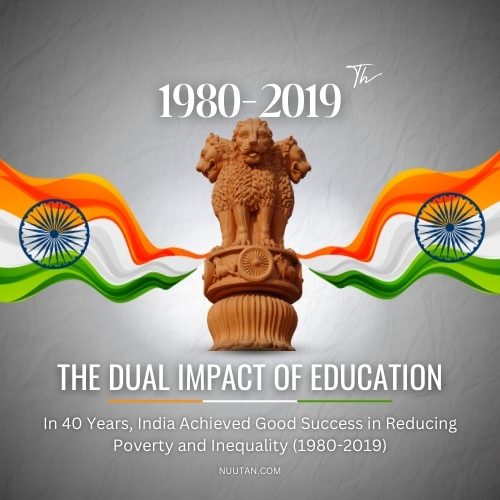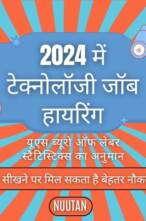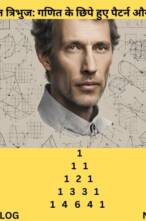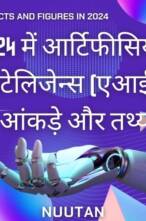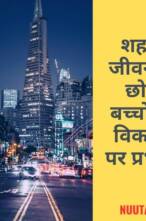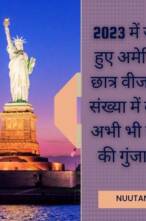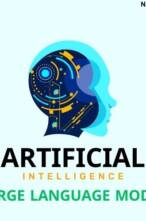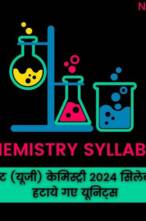Education and Poverty Reduction in India
India’s Economic Progress and the Contribution of Education
Over the last four decades, from 1980 to 2019, India has strengthened its economy, but its biggest victory has been ‘lifting millions of people out of poverty’. The most important reason for this change has been ‘education’, which has bettered countless lives and given them a golden future. Let’s understand through the data and comparisons from this period how education brought about a major improvement in the lives of India’s poorest people and is leading the country towards a prosperous future where everyone gets equal opportunities and no one is left behind.
The Economic Impact of Education: Data and Analysis
In these four decades, India’s economy registered a growth of 410%, which directly means the country’s total income grew by more than four times. The contribution of education to this progress was approximately 30%. But the most inspiring fact is that during the same period, the income of India’s poorest 20% of people increased by 208%, and education played a role of more than half (52%) in this income growth. In simple terms, if the poorest people in India today are earning double the income than before, the biggest credit for it goes to ‘education’. This shows that education is not only an engine of economic growth but also a ray of hope and empowerment for the most vulnerable sections of society.
Challenges in Education and the Path Forward
With steps like the ‘Sarva Shiksha Abhiyan’ and the ‘Right to Education Act’, India brought millions of children to schools from 1980 to 2019, leading to a truly unprecedented increase in access to education. However, during this period, the economic benefit from completing primary education (i.e., subsequent increase in employment or earnings) was only 3% per year, which was the lowest in the world. In comparison, in other countries, this benefit from the same level of education was between 6% and 22%. This means that despite higher enrollment in schools, there was a major deficiency in the quality of education and in linking it to employment, preventing children from reaping the full benefits of their studies. In stark contrast, the economic benefit from secondary and higher education has been much better. In fact, people with a college degree or any technical training are earning much higher salaries compared to those with only primary education. This sends a clear message: today, India must not only focus on increasing the number of schools but also pay special attention to improving the quality of education, increasing digital literacy, and skill development.
The Power of Education: A Historical Example
India’s ‘District Primary Education Program (DPEP)’, which ran in the 1990s and 2000s, is an excellent example of the true power of education. It was an experiment that proved how effective educational efforts made in the right direction can be. In the districts where it was implemented, an increase of one year in average schooling was observed. Its results were incredible:
• The income of the poorest 20% of people saw a remarkable increase of 20%.
• Meanwhile, it had no significant economic impact on the richest 20% of people.
This clearly shows that education is the most effective weapon to fight poverty and inequality. DPEP not only increased the income of the poor but also played a significant role in reducing the social and economic inequality present in society.
Comparison with China and Future Strategy
Between 1980 and 2019, China’s economy (Gross Domestic Product or GDP) registered a growth of 988%, which means its economy grew almost tenfold. This was much higher than India’s 410% growth (meaning our economy grew by more than four times). But here is an interesting point: despite such massive growth, the contribution of education to the total economic progress in both China and India was almost the same (~30%). This means that education was an equally important part of the development of both countries, even though China’s economy grew much faster overall. So why did this big difference arise? The main reason for this is that China placed much more emphasis on both secondary and higher education, due to which the economic benefit (return) of education there was better than in India. For example, in China, people with a college degree or technical training receive much higher salaries because their education was directly linked to market needs and industry demands. India needs to make many more efforts in this direction. By linking education with the demands of the digital era and changing industries, India can reduce this gap.
Reduction in Inequality through Education
From 1980 to 2019, the rich-poor gap (inequality) has been a major challenge in India, but education has helped to bridge this gap to some extent. In particular, the education gap between boys and girls has reduced significantly. During this period, a tremendous improvement was seen in girls’ schooling, and the income of educated women grew more rapidly compared to men. Still, the participation of women in jobs remains low. Moving forward, in 2025, India can reduce this gap even further by promoting girls’ education and job opportunities for them.
The Importance of Public Education and the Need for Quality
From 1980 to 2019, more than 85% of poor children in India studied in government schools, which emphasizes that the biggest responsibility for improving the quality of education lies with the government. Children from wealthy families often go to private schools, where they get better facilities and more experienced teachers. This is the main reason why such a large difference is seen in the benefits (returns) from education. If the government increases investment in teacher training, infrastructure, and technical education in government schools, it will open a new door of opportunities for poor children.
Education and Direct Benefit Transfer: A Powerful Path to Poverty Eradication From 1980 to 2019, education has indeed played a significant role in reducing poverty in India. It is estimated that if direct cash transfers (i.e., amounts like monthly assistance or scholarships given directly by the government to poor families) are implemented more effectively along with education, poverty could be reduced by 50-80%. Together, these two can change the lives of the poor much more rapidly. Moving forward, in 2025, special attention will have to be paid to teaching children not just bookish knowledge in schools, but also the necessary skills for
jobs and self-employment.
Data Source: Distributional Growth Accounting: Education and the Reduction of Global Poverty
Discover an Ocean of Educational Resources! We provide a wide variety of learning materials that you can access through our internal links.
- Nuutan.com is your gateway to a world of information and academic accomplishment. Books in e-book form, multiple-choice question-based online practice tests, practice sets, lecture notes, and essays on a wide range of topics, plus much more!
- Nuutan.com is your one-stop-shop for all kinds of academic e-books, and it will greatly facilitate your educational path.
https://www.nuutan.com/product-category/k12-cuet-iit-jee-neet-gate-university-subjects
- Online multiple-choice tests are available for a variety of subjects on Nuutan.com.
https://www.nuutan.com/product-category/multiple-choice-question
- The Practice Sets on Nuutan.com will improve your performance in any situation.
https://www.nuutan.com/product-category/k12-cuet-iit-jee-neet-gate-cs-btech-mca
- The in-depth lecture notes available on Nuutan.com will significantly improve your academic performance.
https://www.nuutan.com/product-category/k12-cuet-iit-jee-neet-gate-bca-mca-btech-mtech
- Show off your writing chops and gain an edge in educational settings and in the workplace with Profound Essays from Nuutan.com.
https://www.nuutan.com/product-category/k12-competitive-exams-essays
- Nuutan.com is a treasure trove of knowledge thanks to its free academic articles covering a wide variety of subjects. Start your academic engine!
https://www.nuutan.com/nuutans-diary
- Discover our roots and learn how Nuutan.com came to be. Read up about us on the ABOUT US page of our website!
https://www.nuutan.com/about-us
- Embrace a Future of Knowledge and Empowerment! is the vision of the future that Nuutan.com has unveiled.
- Become an author by publishing your work on the Nuutan.com platform.
https://www.nuutan.com/create-a-publication-with-us
The External Link Related to This Academic Product:
- Wikipedia
https://www.sciencedirect.com/science/article/pii/S2405844024023284
- YouTube Video Link

